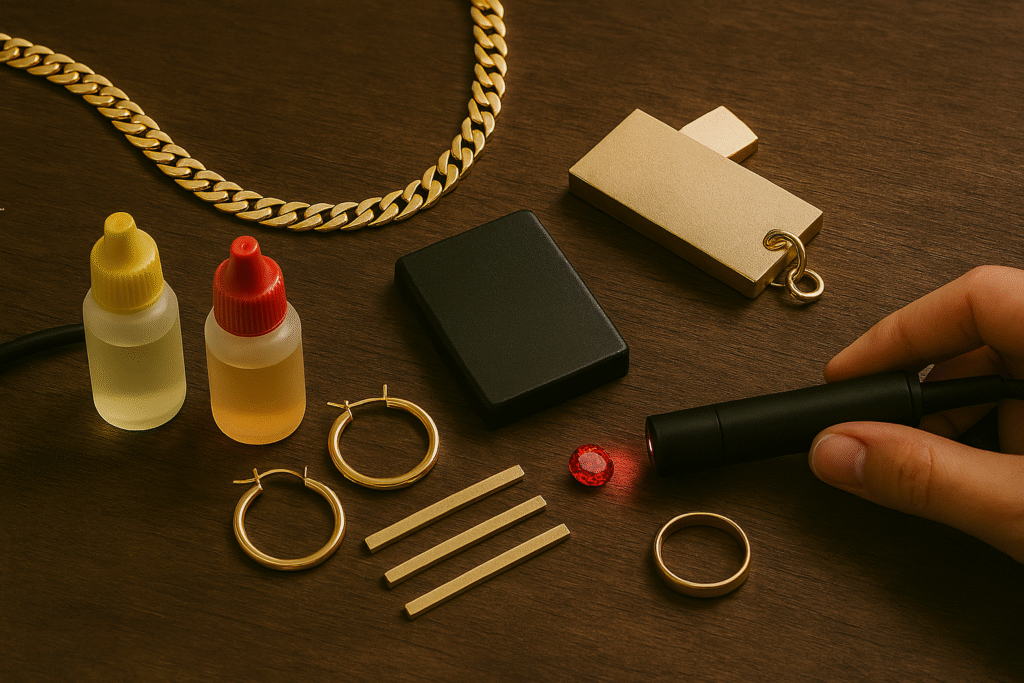Discover how gold is tested with common appraisal methods like the touchstone method and XRF machines. Learn how these techniques build transparency and trust in the gold-buying process.
When you buy or sell gold, you want to know if the metal is genuine.
Appraisers use different methods to check purity and value.
Here are the most common ones:
- Touchstone Method
- The gold piece is rubbed on a black stone.
- It leaves a visible streak.
- Acid solutions of known karat values are applied.
- If the streak remains unchanged, the purity matches the solution.
- Example: If your chain is claimed to be 22K, the streak is tested against 22K acid.
- XRF (X-Ray Fluorescence) Machine
- A handheld device scans the metal.
- It gives an instant digital reading of purity.
- No scratching or acid is required.
- Widely used in jewellery shops and hallmarking centers.
- Example: An XRF scan can confirm if a coin is 24K without leaving marks.
- Weighing and Density Check
- Gold is weighed in air and in water.
- The difference shows the density.
- Pure gold has a specific density of 19.3 g/cm³.
- Useful for detecting impurities or hidden metals.
- Hallmark Verification
- A BIS hallmark stamp can be cross-checked.
- The stamp shows karat, hallmarking center, and year.
- Example: A ring with a “916” mark should match 22K purity when tested.
Why does this matter for you?
Because knowing the process builds trust between you and the jeweller.
Would you feel more confident if the appraiser explained each step while testing your gold?
This article explains how appraisers test gold using traditional and modern methods. It covers the touchstone method and XRF machines in clear, practical terms to help buyers and sellers understand the process and make informed choices.



